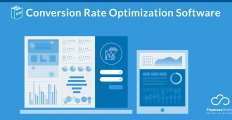
Credit: StartupStockPhotos
In today’s digital age, a wide variety of assets are used for content, from images and videos to documents and presentations. To organize these files, businesses leverage a system designed to centralize, update, upgrade, and optimize various media assets—digital asset management (DAM) software. DAM solutions create a single source of truth for stored assets and enable collaboration among teams and departments. As such, these platforms are instrumental in the modern landscape, as many business workflows operate in the cloud.
A new report by Technavio estimates the digital asset management software market size increasing by an impressive $11.94 billion from 2022 to 2027 at an annual growth rate (CAGR) of 22.05%. In addition, the market’s growth momentum is accelerating, with the CAGR starting at 20.13% during the start of the forecast period. This signifies that the demand for these systems is expected to grow even further in the second half of this decade, and perhaps beyond the forecast period.
The reasons for this lie in the key factors that drive the market. One of which is the increasing use of software-as-a-service (SaaS) applications, which typically streamline workflows and offer functionalities that expand business capabilities on the cloud. The two other factors are the mass digitalization of content and remote collaborations on corporate assets. Interestingly, combining the three equates to content marketing, with most marketing outputs requiring digital assets like photos, videos, and branding schemes.
According to HubSpot’s State of Content Marketing in 2022 report, 66% of marketers see their content marketing budgets increasing in 2022 and in the succeeding years. This points to increasing demand for digital content, which in turn, spurs the growth of the digital asset management software market.
So, how exactly do DAM solutions improve content marketing?
Easy Location of Assets
DAM solutions afford content marketers a host of advantages, and these start with finding the right files to use. According to recent content marketing statistics, 54% of US professionals spend more time trying to locate documents and related media than answering emails. In fact, 57% cite the duration of locating digital media as a major concern. After all, spending too much time finding files delays the distribution of marketing content on social media and other channels, allowing competitors to gain a competitive advantage.
Businesses normally work with large volumes of data that exponentially grow through each gained lead and transaction, which is why the seemingly simple act of searching for files suddenly becomes a challenging task, especially for employees of large enterprises. Digital asset management systems make this process far less cumbersome. These platforms properly categorize, organize, and have users implement access rules on digital assets.
Moreover, DAM systems carry advanced search tools that enable users to thoroughly sort files, leverage AI to quickly find assets and see each item’s access history, and have smart reporting tools. Their interface also presents stored assets in a manner that’s easy for users to distinguish asset types from one another.
Content Production Boost
New digital marketing software statistics reveal that 82% of marketers are actively engaged in content marketing. With this, it is critical for them to plan their content for social media, blogs, and other channels on their calendars early on since these are often time-sensitive. What’s more, over 85% of marketers face pressure to quickly produce content.
Top-tier digital asset management platforms improve operational efficiency by providing collaboration tools through which users can link and password-protect assets to external parties like remote teams, clients, and partners. As a result, remote creators can quickly receive images, videos, guides, and the parameters for each post. This works well with social media managers who cover events, remote workers, and video editors.
Furthermore, DAM systems can be set to automatically remove duplicate and redundant assets. These also automatically record the parties who have accessed each asset and if changes were made, so end-users can immediately pick up where the previous users left off. Older files can also be repurposed and integrated into documents on a content marketing software platform.
Eliminates Data Silos
Barriers to information and communication are impediments to creating effective marketing content. Besides the lack of access to certain types of data, marketing teams might end up duplicating content, which wastes time and resources. As such, a report from Content Marketing Institute found that 38% of marketers consider data silos a major challenge in their line of work.
Digital asset management software solutions help break down silos since these centralize file storage for all teams in the marketing department, and can be expanded to serve entire organizations. Instead of storing assets in isolated drives, teams can upload all the assets they need to a platform, with managers setting the access levels and collaborators for each file. In doing so, teams can easily communicate and collaborate with one another. Content creators can also have access to resources from other teams by simply asking for permission from their managers.
Similarly, sales teams can use a DAM system to provide data to content marketing teams so their documents, presentations, and campaigns are backed by facts. In turn, marketing teams can relay promotional plans to sales teams so their pitches are congruent with the interests of target markets. Moreover, many DAM solutions integrate with CMS and content marketing platforms, which optimizes workflows.
More Than Simple File Sharing
With asset storage as its core competency, digital asset management platforms may be mistaken for file-sharing tools like Google Drive and Dropbox. This potentially causes confusion among marketers who may end up buying the wrong platform.
While there are similarities between the two software types since both store assets, DAM solutions are more oriented toward collaborations. Some systems have internal controls that help with managing projects, properly provisioning and leveraging the asset inventory, and thoroughly sorting assets with advanced search controls and the use of tags, keywords, and metadata.
Furthermore, digital asset management solutions can be set to automatically update files and remove duplicates. These platforms also help maintain brand consistency across projects through templates, have version control functionalities, and seamlessly integrate with digital workflows. In a nutshell, DAM systems are ideal companions of CMS and content marketing platforms.






















Leave a comment!